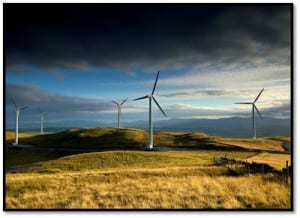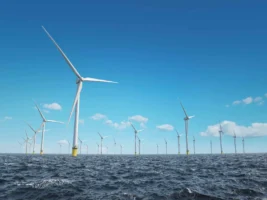There were three recent major events in Australian Solar. One was a surprise (Combet’s early reduction of solar multiplier), another had been coming for months (reaching the 2GW threshold), the other had been coming for millenia (the total solar eclipse). And we can expect each to continue: governments will still make arbitrary decisions that will slow but not stop the next solar threshold, and not even climate change will prevent the next Australian total eclipse from happening (in 2023).
It is impossibly difficult to describe the beauty of experiencing a total solar eclipse. Most that have seen one would agree that it was the most beautiful thing they’d ever seen. And no picture of video, nor vision of partial eclipse can prepare you for the magnificent sight of a solar eclipse. For though both sun and moon are only as large as a fingernail held at arms length, their impression seems to stretch across the entire sky when they perfectly align.
Those who have seen a partial eclipse might wonder what all the fuss is about. For even when 99% eclipsed, the sun is too bright to look at and the image of a crescent sun can only be seen through eclipse glasses that block out the rest of the eclipse’s magic. As totality approaches, an eerie soft light descends, an effuse glow. But it is only at the moment of totality that the sun reveals its true splendor, it’s corona visible to the naked eye, stretching out across the sky. Awesome may be an overused word but it should certainly be reserved for such occasions, for a total solar eclipse is an awesome sight to behold, awesome in the truest sense of the word. And more than just a sight, for the experience is bigger than a fingernail, it stretches across the sky and beyond any visual representation.
Those who seen a solar eclipse are sure to feel elated, and certain to have fallen in love with the sun. The sun we love to sunbathe in in summer, love to warm us in spring, love to watch rise and set, love when it creates rainbows (and sundogs and northern lights). The sun that is responsible for life on earth. It’s a shame more of our elected leaders didn’t see the total eclipse, for had they done so, they may have been reminded of the suns beauty, that our food depends upon it, that almost all of our energy is derived from it, and of the simple elegance of creating electricity directly from it.
The next solar eclipses in Australia will be in 2023 (only in Exmouth WA), 2028 (NT, QLD, NSW, including Sydney), 2030 (SA, NSW, QLD), before passing over Uluru and Byron Bay in 2037. By that stage there will be solar power on every Australian roof. I’m not sure the forthcoming Australian solar energy forecasting service will account for the infrequent but highly predictable effects of the eclipse, but for those that are interested here is the impact of the eclipse on some solar power systems, here’s a graph of the output of Queensland PV systems, as anlysed from PVoutput.org systems – you can see the distinct dip in output and subsequent fast recovery due to the 6:38am eclipse.
 The government’s announcement was unfortunate for PV companies who have come to rely upon the pre-July sales rush to survive for another half-year. Though there will be a small boom in the coming weeks, and installers may work over Christmas, the announcement’s timing will rob many homeowners of a chance to get a PV system installed in time. As distinct from the 5x–>3x multiplier reduction which occurred when there was plenty of stock in the country, the surprise timing of this announcement will make stock availability a significant constraint. Its also another example of why arbitrary ministerial changes should be avoided – with investors in PV likely to pull out or hold back from the market. We can only hope the RET Review removes such powers of adustment to the multiplier and Clearing House price.
The government’s announcement was unfortunate for PV companies who have come to rely upon the pre-July sales rush to survive for another half-year. Though there will be a small boom in the coming weeks, and installers may work over Christmas, the announcement’s timing will rob many homeowners of a chance to get a PV system installed in time. As distinct from the 5x–>3x multiplier reduction which occurred when there was plenty of stock in the country, the surprise timing of this announcement will make stock availability a significant constraint. Its also another example of why arbitrary ministerial changes should be avoided – with investors in PV likely to pull out or hold back from the market. We can only hope the RET Review removes such powers of adustment to the multiplier and Clearing House price.
As SunWiz Insights subscribers were first to discover, Australian PV system installations reached a cumulative 2GW in October. Registrations (which lag installations) were steady at 90MW in October. However, these figures were buoyed by Victorian registrations, which represented 25% of the national market in October. The next few months will likewise be buoyed by the installation rush in November and December, so registrations won’t drop off as far as they did last year. However, January will be a slow start to the year for most. Notably, the trend towards larger systems continues, driven mainly by people making use of the 5kW cap that applied in Victoria and Queensland. But life in a post-incentive world looks like a lot of smaller systems, if NSW and WA are anything to go by. It may be that attention turns to SA (and ACT when its FiT is legislated).
PV Market
- Last month saw 90MW of PV registered across Australia, a slowdown from the peak of June/July but equivalent levels to September.
- There were 13 systems larger than 50kW registered in the preceding three months, but only 2.5MW worth of systems exceeding 30kW.
- Almost all of the USA’s proposed development of utility scale PV(122 projects totalling 21GW) will be crystaline silicon; thin film isn’t looking popular.
STC Market
- STC creation has fallen back to 570k/week, but is equivalent in level to the same time last year, and expected to rise on the back of Combet’s announcement.
- Weeks 44 & 45 of this year saw exceptionally low levels of trading, following the highest trading volumes reached to date in late October
- The liable entities already hold sufficent volumes to meet their Q4 liability, but next years STP will be influenced by the 2012 installations (and lag in their registration).
- The weekly and monthly STC creation tally are displayed on our website – check in regularly.
Solar Hot Spots
Of the postcodes with more than 500 installations, the following areas have the highest penetration of owner-occupied detatched dwellings:
- Postcode 4511 (Godwin Beach QLD) with penetration of suitable dwellings of 50%
- Postcode 4552 (Maleny QLD) with penetration of suitable dwellings of 46%
- Postcode 5171 (McLaren Vale SA) with penetration of suitable dwellings of 45%
- Postcode 4555 (Palmwoods QLD) with penetration of suitable dwellings of 41%
- Postcode 5351 (Barossa Goldfields SA) with penetration of suitable dwellings of 40%
Warwick Johnston is director of consultancy group Sunwiz, which tracks PV performance, how much PV is connected to the grid, and the relationship between deployment and government incentives.









